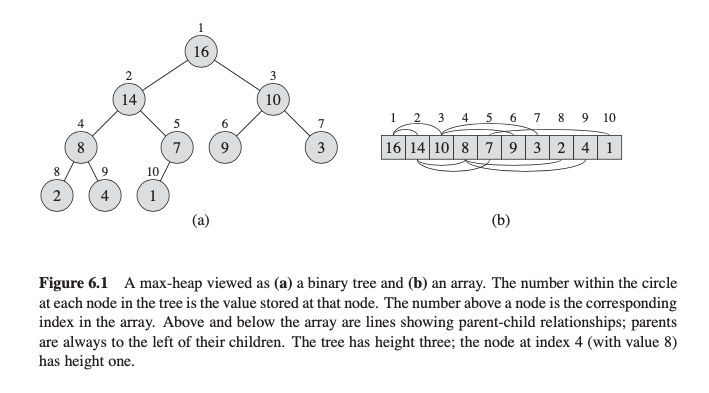Answered step by step
Verified Expert Solution
Question
1 Approved Answer
Illustrate the operation of BuildHeap(A) on the array A = {15, 13, 2, 25, 7, 17, 10, 8}. Show every step, the MAX-HEAPIFY call and

Illustrate the operation of BuildHeap(A) on the array A = {15, 13, 2, 25, 7, 17, 10, 8}. Show every step, the MAX-HEAPIFY call and what the counting INDEX is for the for loop (variable i) in BUILD-MAX-HEAP Note the ARRAY starts out as A = {15, 13, 2, 25, 7, 17, 10, 8} and then gets converted to a HEAP. It does not get added onto with 15 then 13 then 2 then 25 that is different.
(b) Figure 6.1 A max-heap viewed as (a) a binary tree and (b) an array. The number within the circle at each node in the tree is the value stored at that node. The number above a node is the corresponding index in the array. Above and below the array are lines showing parent-child relationships; parents are always to the left of their children. The tree has height three; the node at index 4 (with value 8) has height oneStep by Step Solution
There are 3 Steps involved in it
Step: 1

Get Instant Access to Expert-Tailored Solutions
See step-by-step solutions with expert insights and AI powered tools for academic success
Step: 2

Step: 3

Ace Your Homework with AI
Get the answers you need in no time with our AI-driven, step-by-step assistance
Get Started


